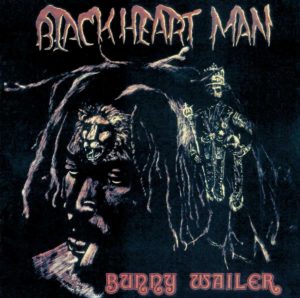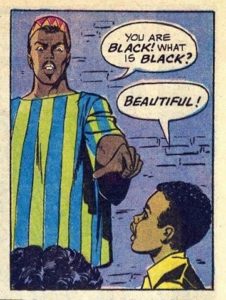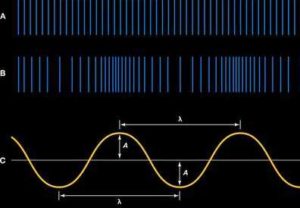Black Knowledge [SST Research 3.0]
Continuing the series drafting the theoretical basis of SST Research (see pt.1 and pt.2), this second part goes into some detail on the nature and characteristics of black knowledge and its production. This identified kinds of knowledge that are situated, embodied and shared. Such ways-of-knowing can be described as vibrational in terms of the standard science of audio mechanics. With SST this kind of knowledge is evident across the African diaspora and numerous music scenes and subcultures originating in marginalised communities throughout both the Global South and the Global North.
Black Knowledge
There are numerous respects in which black knowledge is the appropriate way to identify the kind of embodied, situated and tacit ways of knowing of SST engineers identified in my previous blog. While the term black knowledge has been used to describe the arts and sciences of Kemet (ancient Egypt) and ancient African traditions, here the term is used to identify the kind of knowledge systems that for the most part go unrecognised or are ignored or supressed. Black knowledge is only required as long as the white knowledge of Global North defines knowledge exclusively as epistemology, without recognising of its own position of domination. Black knowledge certainly has a polemical value as a counter narrative to this hegemony. In addition, it also provides a vast reservoir creativity and invention that has all the potential to make an even greater contribution than it has already – particularly in the area of technology.

Bunny Wailer’s Blackheart Man cover, 1976.
Black knowledge is black because it is made so – denigrated (in the literal meaning of the word, to make black). It tends to be largely invisible, as with the protagonist in Ralph Ellison’s novel Invisible Man. The reason SST practitioner ways of knowing are black in this respect is of course due to where it is coming from: the street, the popular culture, the lumpen classes or more generally subjugated classes (on the grounds of race, gender, gender orientation etc); it is nomad knowledge rather than royal science in Deleuze and Guattari’s terms. It is black knowledge in the way the music from such scenes is black noise, as Tricia Rose names it in her ground-breaking monograph. It is the knowledge of what Ramon Amaro has identified as the black technical object [1].
Black knowledge is also such because it is hidden and secret in the traditions black magic, US military “black ops,” the esoteric and literarily the occult, as well the duplicities of Dubois’ double consciousness and the “hush harbours” of the enslaved on the plantations [2]. SST black knowledge is indeed often literally secret, as with some Jamaican sound engineers using monochrome wiring between the components in the equipment rack (rather than the usual colour coded positive and negative), so as to hide the IP of their particular configuration from competition [3].
There is one further reason why black knowledge is an appropriate term for SST engineering. This is a deliberate push back against the spurious universalism that privileges white knowledge (as described in the previous blog). In this respect black knowledge is not a matter of melanin, or even racialisation, but rather a strategy for political opposition that seeks overturn dominant power hierarchies by reversing their evaluative polarities and positively celebrating blackness. Black is beautiful as the 1960s black power slogan is one example, proceeding it were Aimé Césaire, Léopold Sédar Senghor and Jean-Paul Sartre’s concept of negritude [4]. Marcus Garvey’s political strategy with the Universal Negro Improvement Association and African Communities League developed a similar strategy centring the positive value of blackness. More recently Achille Mbembe has developed the concept of black reason [5]. In short, the assertion of blackness aims to provincialize whiteness in the manner that whiteness normally does its other [6].

A comic strip.
For SST the outstanding example of this reversal of valuing black over white comes with Rastafarianism, not least for its major influence on the development of reggae music [7]. With their groundations, reasoning sessions, Nyabinghi drumming and philosophy of “word sound power.” Rastafarian sensibilities and values can be considered as a foundation for the kind of the black knowledge that subsequently found electromechanical expression in SST. The idea of a black god incarnated as the Emperor Haile Selassie is accompanied by an entire vocabulary in which conceptual boundaries are disrupted with apparently innocuous word play, as with outernational for international, overstand for understand and I n I for we and so on. Such strategies, beloved of Trickster character found across African and Caribbean societies, are a common troupe by which subjugated peoples find communicative forms to escape censure.
Situated, Embodied and Shared Knowledges
The first point to make about black knowledge is that it is invariably specifically located, situated and embodied; it is particular and practical. It is learning by doing, by trial and error, experimentation often as an apprentice in the first instance. This is tacit knowing, know-how more than know-what and often takes place in a workshop or studio where a master of the craft supervises the learning through example [9]. This method for the transmission of craft knowledge was the foundation of the medieval guild system as the sole mode of production for furniture and all domestic articles in the Medieval world, before cottage industry or factory manufacture. With research contemporary methodologies this kind of knowledge is gradually gaining greater recognition, with for example the practice-as-research approach that has proved very helpful for exploring the knowledge systems embodied in SST [10].
The situated and embodied nature of black knowledge also makes it subjective and personal in accordance with each practitioner or performer for whom no two performances are exactly alike. Black knowledge is invariably plural. This is an important respect in which black knowledge differs from epistemic knowledge which historically been concerned with the discovery immutable “laws” of nature, the accumulation of knowledge from which “scientific progress” was to be forged. Black knowledge by contrast has personal, just as the distinct tone and timbre of a person’s voice tells us who they are. As a consequence, the individual and the unique at the heart of black knowledge – and indeed all creative expression – is eschewed in favour of what is considered to be repeatable, reproducible and “objective.”
As embodied, black knowledge is inescapably sensorial, if not sensual. Unlike Western models derived the Cartesian divorce of mind from body, black knowledge issues from our enminded bodies and embodied minds. It is founded on an affirmation of life, not Cartesian doubt; the fullness shared sociality, not the isolated cogito; on the depth and richness of far more ancient cultures, not the imagined “empty” space of the tabla rasa or terra incognito convenient to justify colonial conquest.
The ways of knowing of the SST engineers provide a particular situated example of a set of practices that embody black knowledge production. There are many others that would serve equally well – in Brazil aparelhagem, radiola, trio electric, funkeiros and gambiarras, for instance. Black knowledge has no fear of technology; in fact, it is the lack thereof that has fueled such creativity and innovation across countless genres. This is not even to mention numerous innovative and influential voicing techniques, especially by women artists, as well as instrumental techniques, most famously the “bending” of the offbeat of swing and the blue note in jazz. This is all about modulating vibrational frequencies and amplitudes and the subtleties and nuances of rule-breaking performance.
At the same time as being distinctive and individual, another feature of black knowledge is the way it is distributed and shared. This is the case both in terms of the cultures and traditions on which it draws as well as the case that that the sheer size of the equipment needed pump up the vibes of a crowd of up to thousands takes an entire crew [11]. This collective energy of the street – certainly in the case of the Jamaican scene – remains the ultimately arbiter of new musical styles and fashions. If knowledge is power, then black knowledge is to be associated with puissance (power-with) as distinct from pouvoir (power-over) as exorcised by all regimes designed to dominate and suppress. Sound and music are famous for bringing people together in what John Durham Peters calls “the community of communication” [12]. This is a major purpose for all SST.
Vibrations
Exploring the knowledge systems relevant to SST, it can be said that black knowledge is not so much a philosophical or even political matter, but one of vibrations. This is to say, the dynamic energies that animate the material medium of propagation – most often the gaseous air. Black knowledge is not an object, rather it embodied and gestural and has to be performed, thereby going against the grain of western knowledge systems. These elements of gesture and performance are consistent across various modalities, from the excitation of the sound waves themselves, to jazz improvisation, to dance moves, the MC’s extemporisation, to the innovations of black female voicing, to the selector “performing the archive” [13]. Black knowledge is always in process, always in production and subject to invention, refusing the reification of the texts that characterise epistemic knowledge.

Standard sound wave mechanics
Perhaps surprisingly, an understanding of the standard science of wave mechanics makes a useful starting point for black knowledge. Auditory vibrations, due to their dynamic nature invariably, require a means of production, whether this is electromechanical, as with a sonideros, mechanical, as with a steel drum, or biomechanical, as with our vocal chords and lungs. However, they are generated and subsequently propagated, audio mechanics describes all waves in terms of just two dimensions: amplitude and frequency. Fundamentally, black knowledge affects the modulation of these two variables.
Given open air street setting of many SST sessions, volume is important for a large crowd to be feel the vibes of the music and enjoy themselves. With the reggae sound system session, I describe this as sonic dominance [14]. This is the embodied feel of the presence of the sounding; it has a haecceity (thisness) to it as the felt body (Leib) responds to and merges with its auditory environment [15]. Such undeniable experience offers a way of understanding that is central for black knowledge production, that is, with an enminded body, rather than a body eviscerated by the mind.
With the Jamaican sound system session sonic dominance is achieved in particular manner. This is to direct the stacks of speaker boxes to point inwards onto the crowd, rather outwards on either side of a stage, as with a Columbian pico, for example. Being surrounded by sound creates an intensive immersive experience for the crowd inside the music, a complete contrast to inserting the music inside the listener as with headphones or earbuds.

The horizontal dimension of sound diffusion within a reggae sound system session.
The volumes required to achieve sonic dominance are generated by amplifies whose power is measured in watts. The speakers transduce electrical signals into sound waves. At the point of listening their energy is measured in decibels (dB) which is a scale of air pressure, such as the impulses of the compression waves impacting on the eardrum, or indeed with sonic dominance, the entire surface area of the body. The acuity of human hearing ranges from 0 dB to 120 or 130 dB. Vibrations are literally the pressure moving intensities, that is to say, feelings and feeling moved, as expressed in the kinetic movement of the dancers’ bodies.

The vertical dimension of sound diffusion with a reggae sound system session.
Besides their amplitude the other dimension of all waves is their frequency; this gives the pitch that we hear ranging across the eight octaves. The frequencies of sound waves are measures in Hertz (Hz) where the sensitivity of the ear ranges between 20 Hz and 20 kHz. Frequency and volume can only be isolated in theory, in practice they always co-exist; one cannot be heard without the other. Thus, a compression wave consists as a variation of intensities between a moment of rarefaction/ relax/ release/ catharsis/ expansion; and another moment of compression/ intensification/ concentration/ tension/ contraction. As with all periodic motion, these moments have a frequency.
One notable point about vibrations is that as energetic impulses they are themselves are invisible – present only in their effects and affects, as with electromagnetic waves. Escaping visibility, auditory media are well suited for critique, subversion and carrying cultural messages and traditions that would otherwise fall under the control of the hegemonic power structures. Thus, it is sounding, as the medium of choice, that has been benefited most greatly from the fruits of black knowledge production. This increasingly being recognised in the scholarly literature, particularly with reference to the vocal techniques of black women performers and artists [16]. Most important, not only can black knowledge often escape visibility, even when it chooses not to, as the Haitian Voodoo art and design as one example, it tends to be non-representational.
References
[1] Amaro, Ramon. Becoming Digital, As if. e-flux, February 14 2019. https://www.e-flux.com/architecture/becoming-digital/248073/as-if/ With this idea Amaro elaborates Gilbert Simondon’s concept of the technical object, see Simondon, Gilbert. On the Mode of Existence of Technical Objects. Trans. Cecile Malaspina and John Rogove. Minneapolis: University of Minnesota Press, 1958/ 2017.
[2] Nunley, Vorris L. Keepin‘ it Hushed: The Barbershop and African American Hush Harbor Rhetoric. Detroit: Wayne State University Press, 2014; Nunley, Vorris L. “From Harbor to Da Academic Hood: Hush Harbors and an African American rhetorical tradition”. In Richardson, Elaine B. (Ed.). African American Rhetoric(s): Interdisciplinary Perspectives. Carbondale: Southern Illinois University Press, 2007.
[3] Henriques, Julian. Sonic Bodies: Reggae Sound Systems, Performance Techniques and Ways of Knowing. London: Continuum, 2011.
[4] One striking poetic account of this concept comes in Césaire’s epic poem, see Césaire, Aimé (1937/ 1970) Return to My Native Land, trans. John Berger and Anna Bostock, Harmondsworth: Penguin. See also https://www.independent.co.uk/news/obituaries/aime-cesaire-founding-father-of-negritude-811812.html
[5] Mbembe, Achille. Critique of Black Reason. Durham: Duke University Press, 2017. https://criticaltheory.berkeley.edu/wp-content/uploads/2019/09/achille-mbembe-critique-of-black-reason.pdf
[6] This is to use Chakrabarty’s term, in effect using the master’s (tactical tools) against him. See Chakrabarty, Dipesh. Provincializing Europe: Postcolonial Thought and Historical Difference. Princeton: Princeton University Press, 2000.
[7] See the classic text: Chevannes, Barry. Rastafari: Roots and Ideology. New York: Syracuse University Press, 1994.
[8] https://www.youtube.com/watch?v=u6z5qTXrsAM
[9] See Sennett, Richard. The Craftsman, London: Allen Lane, 2008.
[10] D’Aquino, Brian, Henriques, Julian and Vidigal, Leonardo (2017) “A Popular Culture Research Methodology: Sound System Outernational”, Volume! 13 : 2 | 2017 : Inna Jamaican Stylee. p. 163-175. Available here: https://journals.openedition.org/volume/5146
[11] A sound system draws attention to the numerous different skills and participants needed to stage any and every music event, as described by the term “musicking.” See Small, Christopher. Musicking: the Meaning of Performance and Listening. Middletown: Wesleyan University Press, 1998.
[12] Peters, John Durham. Speaking into the Air: A History of the Idea of Communication. Chicago: University of Chicago Press, 2000.
[13] This is to use Bourriaud‘s phrase, see Bourriaud, Nicolas. Postproduction, Culture as Screenplay: How Art Reprograms the World. New York: Lukas & Sternberg, 2002.
[14] Henriques, Julian. “Sonic Dominance and the Reggae Sound System”, in Auditory Culture Reader, eds. Bull, Michael and Back, Les, Oxford: Berg, 2003: 451- 480.
[15] Schmitz, Hermann. New Phenomenology: A Brief Introduction. Intro. Griffero, Tonino. Milano: Mimesis International, 2019.
[16] See for example Brooks, Daphne A. Liner Notes for the Revolution: The Intellectual Life of Black Feminist Sound. Cambridge: The Belknap Press of the Harvard University Press, 2021; Havis, Devonya. “Now, How Do I Sound?’ Considering a Different Philosophical Praxis. Hypatia. Volume 29, Issue 1 (Special Issue: Interstices: Inheriting Women of Color Feminist Philosophy). Winter 2014: 237 – 252.
